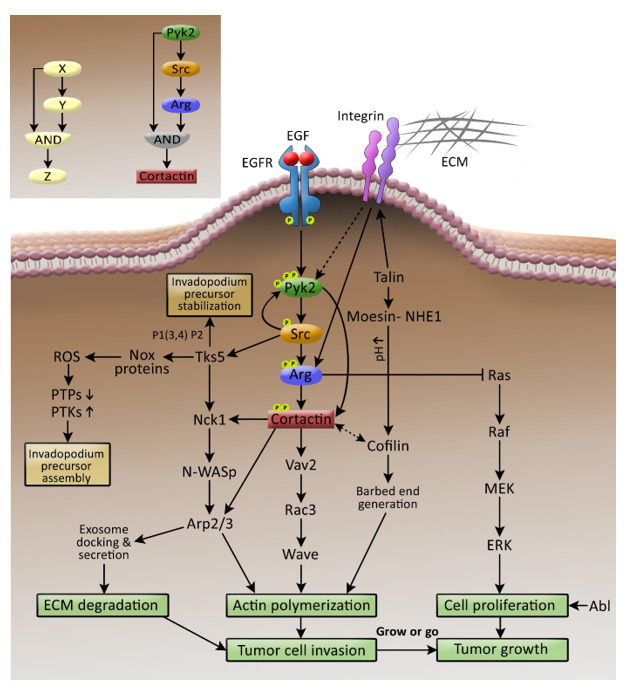Figure 1.

Pyk2-mediated signaling in invadopodia. Extracellular stimulation by EGFR and integrins leads to activation of Pyk2, which tyrosine phosphorylates cortactin both directly and indirectly by activating Src and Arg kinases. Activation of Src leads to invadopodium precursor assembly and stabilization by recruiting and phosphorylating Tks5. Complete tyrosine phosphorylation of cortactin leads to activation of several signaling pathways, which induce actin polymerization and ECM degradation and consequent invadopodia-mediated tumor cell invasion, intravasation, and metastatic dissemination. While promoting cell invasion and dissemination, Arg simultaneously inhibits the Ras-MAPK pathway, which induces cell proliferation and consequent tumor growth, acting as a switch in metastatic cancer cells that govern the decision to “grow or go” (divide or invade). Inset: the coherent type I feedforward loop with AND gating (left) parallels the Pyk2-Src-Arg-cortactin pathway (right). The different NRTKs, their substrates, and invadopodial roles are described in Table 1.
